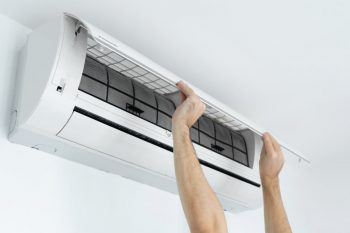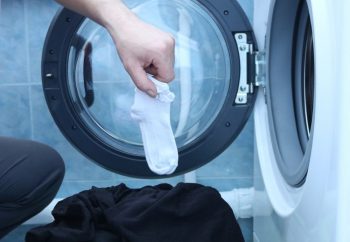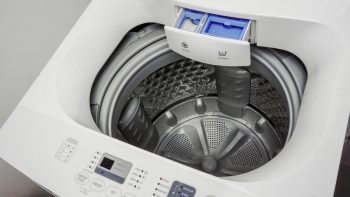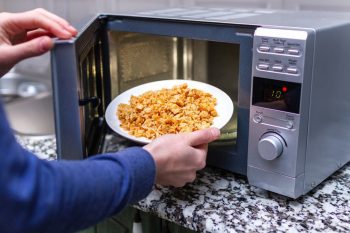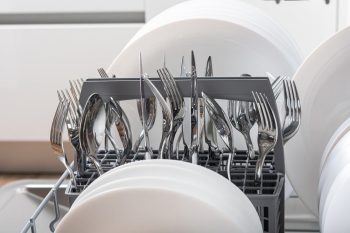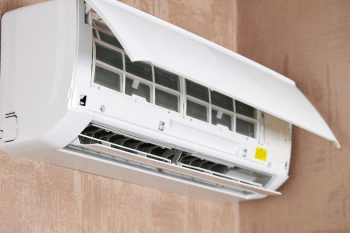
In today’s world, where every square foot of living space counts, an indoor dryer vent can be a convenient solution for those who live in apartments or houses without access to an external wall. Despite potential safety concerns, an indoor dryer vent can be a practical alternative if used and maintained properly.
In this comprehensive guide, we’ll walk you through the process of making your own indoor dryer vent, discuss safety precautions, cost implications, and provide tips on maintenance and troubleshooting.
To make your own indoor dryer vent, you’ll need a 5-gallon bucket, a 4-inch diameter flexible duct, a vent hole cover with a screen, a metal sleeve, weatherproofing foam, adjustable clamps, water, and a small amount of bleach. Cut three vent holes in the bucket lid, attach the screen, the metal sleeve, and create a weighted cap for the third hole. Partially fill the bucket with water and bleach, then connect the dryer hose to the bucket lid. Remember to only use this setup with electric dryers and clean the lint filter regularly for safety.
What is an Indoor Dryer Vent?
An indoor dryer vent is designed to redirect the hot air and moisture generated by a dryer into the interior of a home, rather than expelling it outdoors. This setup is particularly useful for those living in spaces without outdoor access, such as apartments and high-rises.
Indoor dryer vents are necessary in situations where there is no access to an exterior wall for venting or when living in an apartment or condo where outdoor venting is not possible. They help maintain moisture levels, prevent mold growth, and protect air quality by removing lint and other debris from the dryer before being released into the home environment. However, it is crucial to note that indoor dryer vents should never be used with gas-powered clothes dryers due to the risk of carbon monoxide poisoning.
Materials Required for DIY Indoor Dryer Vent
Creating your own indoor dryer vent requires some basic materials:
- A 5-gallon bucket or similar container to hold water and trap lint.
- A 4-inch diameter flexible duct or vent hose to connect the dryer to the container.
- A vent hole cover with a screen to prevent lint from escaping into the room.
- A metal sleeve to attach the vent hose to the container.
- Weatherproofing foam to seal the vent hole cover.
- Adjustable clamps to secure the vent hose to the dryer and the container.
- Water and a small amount of bleach for the lint trap.
These materials are readily available at most home improvement stores and are relatively inexpensive.
Step-by-Step Guide to Building an Indoor Dryer Vent
Here’s how to create your own indoor dryer vent:
- Cut the Holes: Cut three vent holes in the bucket lid—one for the dryer hose, one for the screened vent hole, and one for the weighted cap.
- Screened Vent Hole: Attach two layers of window screen wire to the bottom of the bucket lid using a glue gun. This will allow warm, humid air from the dryer to enter the room.
- Attach Metal Sleeve: Attach a metal sleeve to the hole where the dryer hose will connect to the bucket lid.
- Weighted Cap: Create a weighted cap for the third hole to prevent air from escaping when the dryer is not in use. Use weatherproofing foam on the bottom of the vent hole cover to seal it.
- Add Water and Bleach: Partially fill the bucket with water and a small amount of bleach. The vent hose should not touch the water; it should blow on the surface of the water, causing the lint to stick.
Remember that this DIY indoor dryer vent is only suitable for electric dryers and should not be used with gas dryers. Also, if used in a small room, keep the door open while the dryer is in use to avoid excessive humidity.
Safety Precautions for Indoor Dryer Vents
Safety should be your utmost priority when installing and using an indoor dryer vent. Here are some precautions to consider:
- Use only with electric dryers: Indoor dryer vents should never be used with gas dryers, as the fumes from the dryer contain carbon monoxide, which can be dangerous.
- Lint build-up: Lint trapped in the dryer vent can be a fire hazard. The filters in indoor dryer vents need to be cleaned more frequently to prevent house fires.
- Excessive moisture: Indoor dryer vents can lead to increased humidity in the home, which can cause mold growth and structural damage.
- Air quality: Venting a dryer vent indoors can introduce dust, lint, and other pollutants into your home’s air. Laundry detergents and dryer sheets often include chemicals that are dangerous to breathe in on a consistent basis.
Ensure proper installation and regular maintenance of the indoor dryer vent. Clean the lint filter frequently and monitor the humidity levels in your home.
Maintaining Your Indoor Dryer Vent
Regular maintenance is crucial for the longevity and effectiveness of your indoor dryer vent. Here are some tips:
- Clean the lint filter regularly: Remove lint from the filter after every drying cycle to maintain proper airflow and reduce the risk of fire.
- Inspect the vent and ductwork: Periodically check the vent and ductwork for any signs of lint buildup or damage.
- Vacuum the vent and ducts: Use a vacuum cleaner with a long hose attachment to clean the vent and ducts from both the inside and outside of your home.
- Check the exterior vent: Ensure the exterior vent flap is functioning properly and not obstructed by debris or lint.
By following these steps, you can ensure that your indoor dryer vent remains in good working condition, reducing the risk of fire and improving the efficiency of your dryer.
Troubleshooting Common Indoor Dryer Vent Issues
Like any other home appliance, indoor dryer vents can develop issues over time. Here’s how to troubleshoot common problems:
- Check for lint buildup: Lint accumulation is a common issue that can cause your dryer to take longer to dry clothes and even lead to a fire hazard.
- Inspect the vent hose: Check the dryer vent hose for any kinks, crushes, or blockages.
- Examine the vent exhaust flap: Most dryers have a flap on the vent exhaust that allows hot air to exit while preventing cold air from entering.
- Check for proper venting: The vent should be short and laid out in a straight line.
- Inspect for damaged or disconnected components: Look for loose or disconnected ducts, holes, or tears in the vent pipe.
Remember that indoor dryer venting is not considered safe, and it is always better to vent your dryer outside if possible. However, if you must use an indoor dryer vent, following these tips can help ensure its effectiveness and minimize potential safety issues.
Conclusion
While creating your own indoor dryer vent can be a cost-effective and convenient solution, it’s crucial to understand the potential risks and ensure its proper installation and maintenance. Always prioritize safety and consider professional installation if you’re unsure about the process. Happy DIY-ing!
Frequently Asked Questions
Can I use any type of bucket for the indoor dryer vent?
It’s best to use a 5-gallon bucket, as it’s the optimal size for this project. It should be made of a sturdy material like plastic or metal to withstand the heat from the dryer.
Can I use an indoor dryer vent in a small space?
Yes, but it’s crucial to keep the door open while the dryer is in use to avoid excessive humidity. You should also monitor the room regularly for signs of mold growth.
How often should I clean the lint filter?
It’s recommended to clean the lint filter after every drying cycle. This helps maintain proper airflow and reduces the risk of fire.
What type of bleach should I use in the bucket?
You can use a standard household bleach. The bleach helps to kill any potential mold or bacteria in the lint that accumulates in the bucket.
What should I do if my dryer vent hose gets kinked or crushed?
You should immediately replace a kinked or crushed vent hose. Such issues can restrict airflow and lead to overheating and potential fire hazards.


